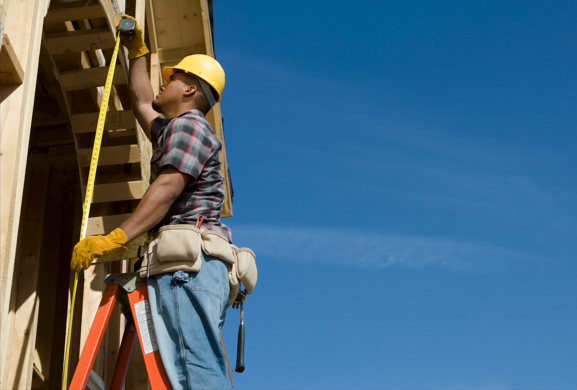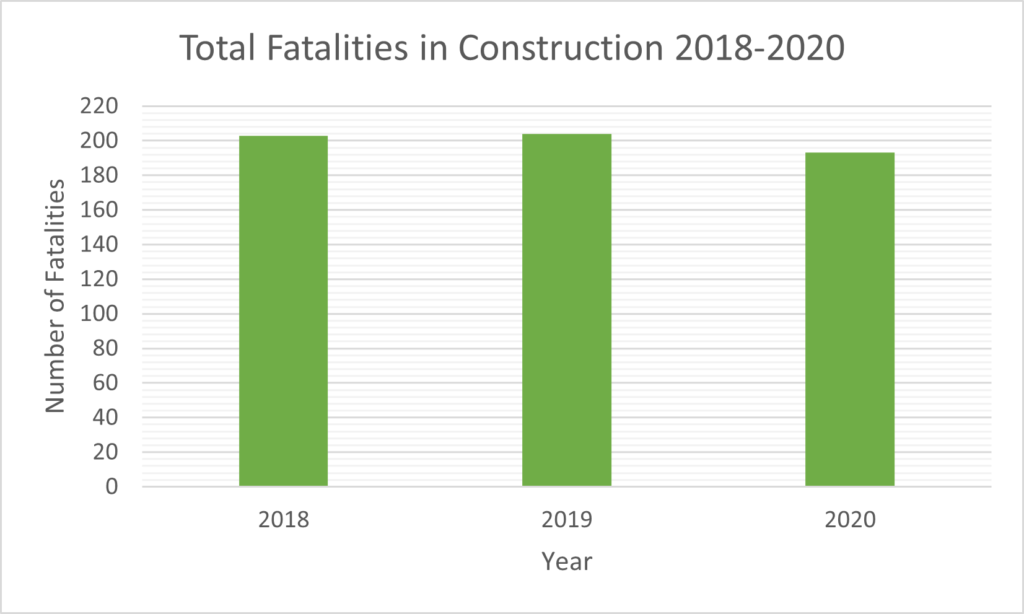
A Firm Foundation: The Efforts to Improve Safety in Canada’s Construction Industry
There has been a lot of change within the Canadian construction industry over the past few years towards sustainability and improved safety practices. The large number of federal, provincial and territorial safety associations are trying to make a difference in the safety statistics, but the annual fatality rate for the construction industry is still way too high.
Overview of the Canadian Construction Industry
The construction industry in Canada is a vital part of the country's economy, employing 963,087 people in 2020, 1,061,077 people in 2021¹ and 1,516,700 at the end of 2022.² The industry is responsible for building and maintaining a wide range of structures, including housing, commercial buildings, roads, bridges, and infrastructure such as water and sewage systems. The construction industry in Canada is divided into two main sectors: non-residential and residential. Non-residential construction includes commercial and institutional buildings, such as office buildings, hospitals, and schools. Residential construction includes the construction of single-family homes, townhouses, and apartment buildings.
Canadian Construction Standards and Regulations Helping to Improve Safety
In the interest of safety the construction industry in Canada is subject to a number of regulations and standards set by the federal and provincial governments. Occupational health and safety (OH&S) legislation in each jurisdiction outlines the general rights and responsibilities of the employer, the supervisor and the worker through an Act or statute and related regulations. These regulations cover a wide range of issues, including safety, building codes, and environmental protection and provide guidelines to ensure safe working conditions and to protect workers from hazards.
Employers are required to comply with the Acts, statutes and regulations, and workers have the right to refuse unsafe work. The industry is also subject to inspection by government agencies to ensure compliance with these regulations.
Canadian Centre for Occupational Health and Safety (CCOHS)
The Canadian Centre for Occupational Health and Safety (CCOHS) are a government run agency that create amazing resources for many different industries, including construction. Within the Construction Worker General page are the fact sheets - What are some preventive measures for construction workers? What are some good general safe work practices? Both have links to multiple internal web pages that open containing easily read information and diagrams.
The Role of Canadian Construction Associations in Effecting Change
In recent years, the construction industry in Canada has seen a number of changes and developments. There has been a shift towards sustainable construction practices and the use of new technologies as well as an increased focus on safety. Although there doesnât seem to be an overarching government department focussing on increasing safety across the construction industry, there are several construction associations in Canada that represent different segments of the industry. These play an important role in promoting safety, professional development, and advocacy for the industry.
Provincial and Territorial Construction Safety Associations
Two of the main construction associations in Canada are:
The Canadian Construction Association (CCA) - The CCA is the national voice of the construction industry in Canada, representing over 20,000 companies in the non-residential and heavy construction sectors.
The Canadian Federation of Construction Safety Associations (CFCSA) â Which works as an umbrella organization for member provincial and territorial construction safety associations.
Some of the provincial and territorial construction safety associations are:
- British Columbia Construction Safety Alliance
- Alberta Construction Safety Association
- Heavy Construction Safety Association Of Saskatchewan
- Saskatchewan Construction Safety Association
- Construction Safety Association Of Manitoba
- Manitoba Heavy Construction Association
- Asp Construction Association Sectorielle Paritaire (Quebec)
- Infrastructure Health & Safety Association (Ontario)
- New Brunswick Construction Safety Association
- Newfoundland & Labrador Construction Safety Association
- Construction Safety Nova Scotia
- Northern Safety Network Yukon
- Northern Construction Safety Association (Northwest Territories & Nunavut)
The Ongoing Challenge of Construction Fatalities in Canada
Despite the abundance of Construction focused safety associations, the number of workplace fatalities in the construction sector is still very high.

The Importance of Employee Safety Monitoring
The Canadian provinces and territories are making an effort to improve safety in the construction industry in their own areas, such as WorksafeBC who have made construction one of the four industries identified in their High-Risk Strategy.
Recommendations for safety precautions construction sites should be taking include; harnesses, lifelines, having three points of contact, securing ladders and inspecting equipment before use. Businesses should increase their support by supplying their employees with an employee monitoring system. A safety monitoring system cannot stop an employee falling from height or being crushed, but it can drastically reduce the time frame in which they are found and help sent for.
How an employee safety monitoring app can help
Having an employee safety monitoring app that has a worker/man down app feature can alert supervisors to an accident within three minutes. If the worker is able to tap their screen or speak, then that alert and their position can be immediate.
This happens through having real time GPS locations for all staff who are on shift. This information is visible to management on maps that are accessible on the cloud-based dashboard. These details are vital for reaching staff as quickly as possible in an emergency situation.
Overall, the construction industry in Canada is an important sector that plays a key role in the country's economy. While there are challenges and risks associated with the industry, efforts are being made to improve safety and to ensure compliance with regulations and standards.
3 - National Work Injury, Disease and Fatality Statistics2018-2020, Association of Workersâ Compensation Boards of Canada
Book a Demo Today
Alternatively, get a free trial of the app
Want to try OK Alone? Click the button below and enter your details. It's free and no credit card is required.
